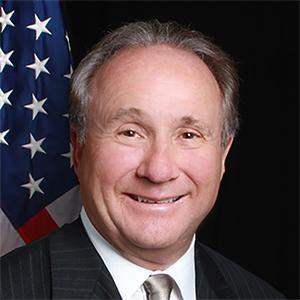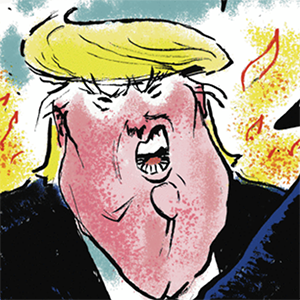Commentary: Financial illiteracy is symptomatic of larger problems in America
Published in Op Eds
Linda McMahon, the new secretary of education, has her hands full. Her game plan is to dissolve the Department of Education. Given her business background, she would be wise to look at the state of financial literacy in the population as the “canary in the mine shaft” for not shuttering the department, but remaking K-12 education.
The United States is viewed as one of the wealthiest countries in the world. Yet if you pay cash at a store that requires change, and the cash register is not functioning, how likely is it that the cashier will figure out your correct change?
Such an insignificant but so very common phenomenon is but one of many that illustrate how financial illiteracy plagues our nation.
The areas where financial literacy make a difference are numerous. When purchasing a home, the down payment you make, the mortgage rate you secure and the points you buy to obtain a lower rate all impact the total cost of the home purchase.
Deciding between fixed rate versus variable rate mortgages is an exercise in risk assessment and forecasting. Financial institutions have computer software that gives you the numbers. Yet understanding what these numbers mean demands a level of financial literacy that few possess.
The same can be said with using credit for purchases. Around one-half of all credit card users carry a balance, which means that they are paying interest on such debt. Given that interest rates are now running around 20 percent per annum, since credit cards are viewed as unsecured debt, a $1,000 purchase today can easily double in cost if paid for over several years.
How about purchasing a vehicle, something that many people do during their lifetime. Is a lease or an outright purchase a better option for you? What about the interest rate offered on an automobile loan, which is highly dependent on your credit score? Is a three, five, or seven year loan right for you?
Then there is purchasing insurance, whether for your automobile or your home. How much coverage do you need, and what type? Most people defer to an agent or broker, who are first and foremost sales people with highly varying levels of skill and knowledge.
Even shopping at the grocery store demands some basic financial literacy. Which is a better buy, an 8.5 ounce bottle of maple syrup for $5.99 or a 12 ounce bottle for $8.99? Conventional wisdom suggests the larger bottle is a better value. In this case, conventional wisdom would be wrong.
Corporate America exploits such widespread financial illiteracy for their own gain and profit. This is best seen with shrinkflation, the practice of reducing the quantity of product offered in a package without lowering the price. Such shenanigans give consumers the impression that they are paying the same over time, when in fact they are paying a higher unit price, effectively reducing their buying power.
Some states require retail stores to list per unit prices. Yet understanding such information of itself requires some level of financial literacy. This makes many consumers easy targets for exploitation, which corporate America is happy to oblige.
So why is financial illiteracy so ubiquitous? The answer is mathematics. This is where the problem lies. Many people struggle to keep track of their checking account expenditures and deposits, even when the calculations are done for them by their bank. The mathematics behind financial literacy are not overly complicated. They are, however, tedious, something that requires attention to detail to fully grasp.
When students are given standardized tests in mathematics, their scores have not only persistently trended downward over time, they come up woefully low compared to students in other countries. Standardized mathematics test scores are not the end-all measure for future success. They are, however, one data point that should not be ignored.
Such mathematical deficiencies are a threat to our national security and well-being. As technology advances, providing more opportunities for creating national wealth, mathematics and statistics, as well as data and computer science, form the bedrock for such advances. Without such tools, engineering advances will face ever growing headwinds, with new technologies emerging less frequently.
Widespread financial illiteracy of itself is not the root problem. It is symptomatic of a bigger problem in the foundations for learning, particularly for STEM fields. That is why the Mathematical and Statistical Modeling Education Act, which was approved in the House and is on its way to the Senate, must be made into law.
As AI becomes more widespread across society, machines begin to take on more tasks, allowing people to relax basic skills that involve mathematics. Such a trend can be traced back to the advent of affordable pocket calculators in the 1970s. Such advances are overall beneficial; no one wants to go back in time doing mathematical calculations by hand. Yet as with all advances, there are unintended consequences, one of which is financial illiteracy.
So the next time you make a purchase, no matter how big or small, take the time to understand the implications of your decision and whether such purchases provide the best value for your money. It may move you in a new direction, certainly informing the decision you make.
Anything you can do to enhance your financial literacy is certain to pay handsome dividends. Better yet, helping your children gain such skills is an investment well worth making in their future. And such investments begin with mathematics.
____
Sheldon H. Jacobson, Ph.D., is a professor in computer science in the Grainger College of Engineering at the University of Illinois Urbana-Champaign. He uses his expertise in risk-based analytics to address problems in public policy.
____
©2025 Tribune Content Agency, LLC.




























































Comments